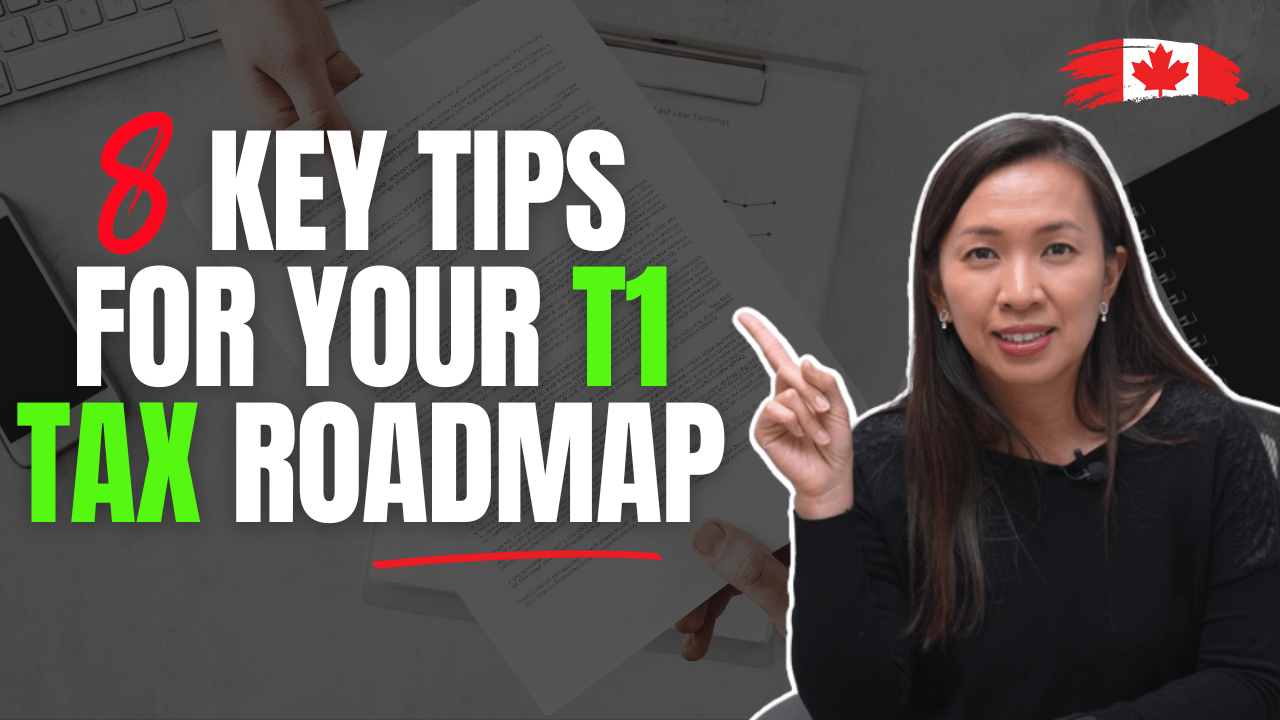Navigating the complexities of tax filing and compliance in real estate investing can be a daunting task. From accurate reporting of rental income and expenses to understanding the implications of property sales and capital cost allowances, there’s a myriad of considerations that investors must address to ensure compliance with tax regulations while maximizing deductions and minimizing liabilities.
In this comprehensive guide, we’ll delve into essential tax filing tips and strategies tailored specifically for real estate investors. From rental income and expense reporting to documentation requirements and joint venture partnerships, we’ll cover everything you need to know to stay on top of your tax obligations and optimize your financial position in the real estate market.
1. Accurate Rental Income and Expense Reporting:
When reporting rental income, it’s crucial to understand that you can deduct a reasonable amount of expenses incurred for the purpose of earning rental income, subject to certain exceptions. These deductions may include mortgage interest, property taxes, insurance, advertising costs, real estate agent leasing commissions, repairs and maintenance, property management fees, and condominium fees, among others.
However, it’s important to note that certain expenses cannot be deducted in the year of purchase, such as legal fees and land transfer taxes. Additionally, finance charges, such as lender fees and mortgage insurance, are not considered one-time expenses and cannot be deducted fully in the year of purchase. Instead, these expenses can be deducted over a period of five years.
2. Sale of Property Reporting:
Starting from 2023 and onwards, if you sell a property within 365 days, it’s mandatory to report the sale as business income, unless it falls under specific exclusions. Even if you sold a property in 2023 not governed by this new rule, the CRA would still assess whether the transaction is considered business or capital. If deemed a business transaction, 100% of the profit is taxable, and likewise, 100% of the loss is deductible.
For long-term rental property sales, the transaction typically falls under the capital account. In this case, only 50% of the profit is taxable, with the remaining 50% tax-free. Remember to include all capital improvements made over the years, as these are eligible deductions against the profit.
Recapture is another critical consideration. If you’ve claimed capital cost allowance against the property in the past, the amount claimed over the years must be included in your income upon sale. If unsure about the claimed amounts, a review of past tax returns is necessary.
Even in the event of a loss, reporting the sale is essential. Capital losses can be carried back three years and forward indefinitely to offset against capital gains. Non-capital losses, such as business losses, can be carried back three years and forward for up to 20 years.
3. Home Office Deductions:
You can claim a deduction for home office expenses if you don’t have another location to manage your portfolio. However, be cautious about potential issues with losing the primary residence exemption. Eligible expenses for deduction include a portion of utilities, maintenance, internet, property tax, and mortgage interest, among others. It’s crucial to maintain detailed records and a floor plan in case of a CRA audit. Keeping thorough documentation will help substantiate your claim and ensure compliance with tax regulations.
4. Capital Cost Allowance (CCA) Strategy:
CCA represents the wear and tear allowance that you’re permitted to claim against the building and all capital improvements, including furniture, fixtures, and appliances. The CRA assigns different rates for CCA claims based on the asset class. For instance, furniture and fixtures typically have a 20% rate, computers have a 50% rate, and buildings have a 4% annual rate.
It’s essential to understand that CCA is not a tax deduction but rather a tax deferral mechanism. If you have net rental income from your properties, you can use CCA to reduce the net rental income to zero. However, you cannot use CCA from your rental portfolio to create a loss.
When you sell a property, you’re required to include the CCA you’ve claimed over the years as rental income, also known as recapture. This works similarly to an RRSP contribution – you claim it without paying tax initially, but upon withdrawal (selling the property), you need to include the claimed amount in your income as recapture.
You can also use CCA from a different property to offset the recapture income on a property you’re selling, allowing you to continue deferring taxes. However, if you’re considering moving into a rental property, it’s not advisable to claim CCA.
5. Automobile Expense Deductions:
You can claim various automobile expenses incurred for the purpose of managing your rental portfolio, including gas, electricity charges, maintenance and repairs, 407 ETR bills, license and repairs, CAA membership, lease costs, depreciation (capital cost allowance on the car if you purchase the car), and interest expenses. However, it’s crucial to note that the car must be registered in your name to claim these deductions.
One essential requirement for claiming automobile expenses is to maintain a detailed logbook documenting the mileage you’ve incurred while running your rental portfolio. You’ll need to record both the business-related mileage and the total mileage driven. By calculating the business use percentage relative to the total mileage driven, you can determine the percentage of auto expenses that are deductible against your rental income.
For further guidance on automobile expense deductions and how to maintain a logbook, you can refer to our previously written blog post and YouTube video.
6. Documentation of Expenses:
Many individuals mistakenly believe that bank and credit card statements are sufficient for CRA audit purposes. However, it’s crucial to keep the original receipts for all expenses incurred. Whether it’s a small gas receipt that fades over time or a significant invoice for roof replacement, retaining the original receipts is essential. Without them, you cannot claim deductions.
For instance, you should retain mortgage statements, property tax and insurance bills, invoices from property managers, lease agreements, utility bills, internet bills, repair and maintenance invoices, and documentation related to home office expenses, including the floor plan. Similarly, if you claim automobile expenses, keep gas receipts, insurance documents, lease agreements, etc. In cases where tenants vacate, it’s prudent to document communication emails, and for arrangements like cash for keys, retaining paperwork is essential.
You can keep receipts electronically, provided they are stored on a server located in Canada. It’s mandatory to retain these receipts for at least seven years. However, for capital improvements (major renovations and improvements), you must keep receipts for seven years AFTER selling the property. This is because you claim these capital improvements as deductions against the sale price after selling the property.
Ensuring you have proper documentation is key to supporting your deductions in the event of a CRA audit.
7. T1 Compliance:
The T1 filing deadline is swiftly approaching, set for April 30 for individuals who are not self-employed. However, for self-employed individuals, the filing deadline is extended to June 15. It’s crucial to note that tax payments are still due by April 30 to avoid interest charges.
For corporations with a year-end of December 31, tax payments are due by March 30 for any tax obligations. The filing deadline is June 30 for active businesses but varies for passive income, with tax payable by February 29.
If you’re self-employed and have an annual HST filing requirement, the filing due date is also June 15, but the payment due date is March 30. Similarly, for corporations with an annual HST filing requirement, the due date is March 30, with payment also due on the same date.
Ensuring compliance with these filing deadlines and requirements is essential to avoid penalties and ensure smooth tax operations.
8. Presenting to Your Joint Venture Partners:
For those involved in joint ventures, it’s paramount to maintain transparent and precise financial reporting to your partners. This includes providing detailed records of shared expenses, income distributions, and any other financial transactions relevant to the venture.
Effective communication and collaboration among joint venture partners are essential for the success and sustainability of the venture. By ensuring that all financial information is accurately documented and shared in a timely manner, you can foster trust and accountability among partners.
Regular meetings or updates to review financial performance, discuss upcoming expenses or investments, and address any concerns or questions can help keep all partners informed and aligned with the venture’s goals.
If you’re the money partner in the joint venture relationship, it’s crucial to stay on top of obtaining the financial information necessary for your own filing. We’ve encountered situations where clients have missed years of joint venture reporting from their investment partners, leading to potential compliance issues and missed opportunities for deductions or tax planning.
Remember, clear and open communication is key to building strong and mutually beneficial partnerships in real estate investing.
Conclusion:
As we conclude this comprehensive guide on tax filing tips for real estate investors, it’s crucial to emphasize the importance of compliance, accuracy, and proactive planning in managing your tax obligations. By staying informed about the latest regulatory requirements, leveraging deductions and allowances effectively, and maintaining meticulous documentation, you can navigate the complexities of real estate taxation with confidence and ease.
Whether you’re reporting rental income and expenses, documenting capital improvements, or collaborating with joint venture partners, attention to detail and a thorough understanding of tax regulations are essential for achieving your financial goals in the real estate market. Remember, proactive tax planning and compliance are key drivers of success in real estate investing, enabling you to optimize your returns and build long-term wealth with confidence.
We hope this guide has provided valuable insights and practical strategies to enhance your tax filing process and empower you to make informed decisions in your real estate investment journey. For further guidance and support on tax-related matters, don’t hesitate to reach out to our team of experts. Here’s to your continued success and prosperity in the dynamic world of real estate investing!
Cherry Chan, CPA, CA
Your Real Estate Accountant





